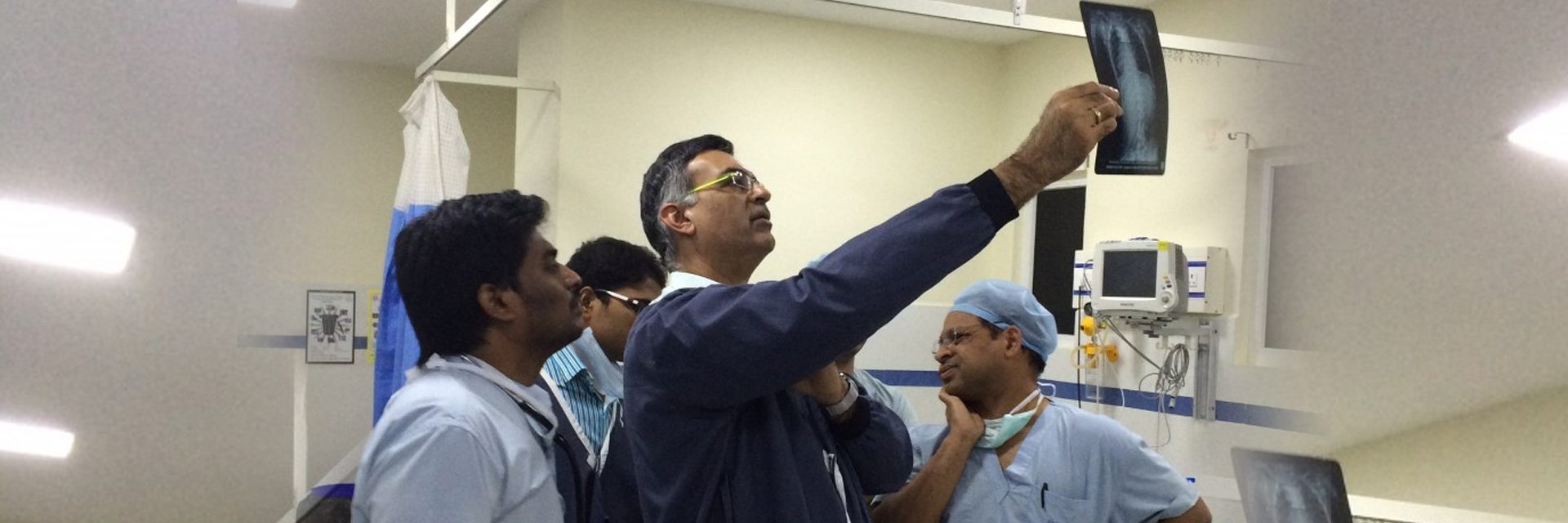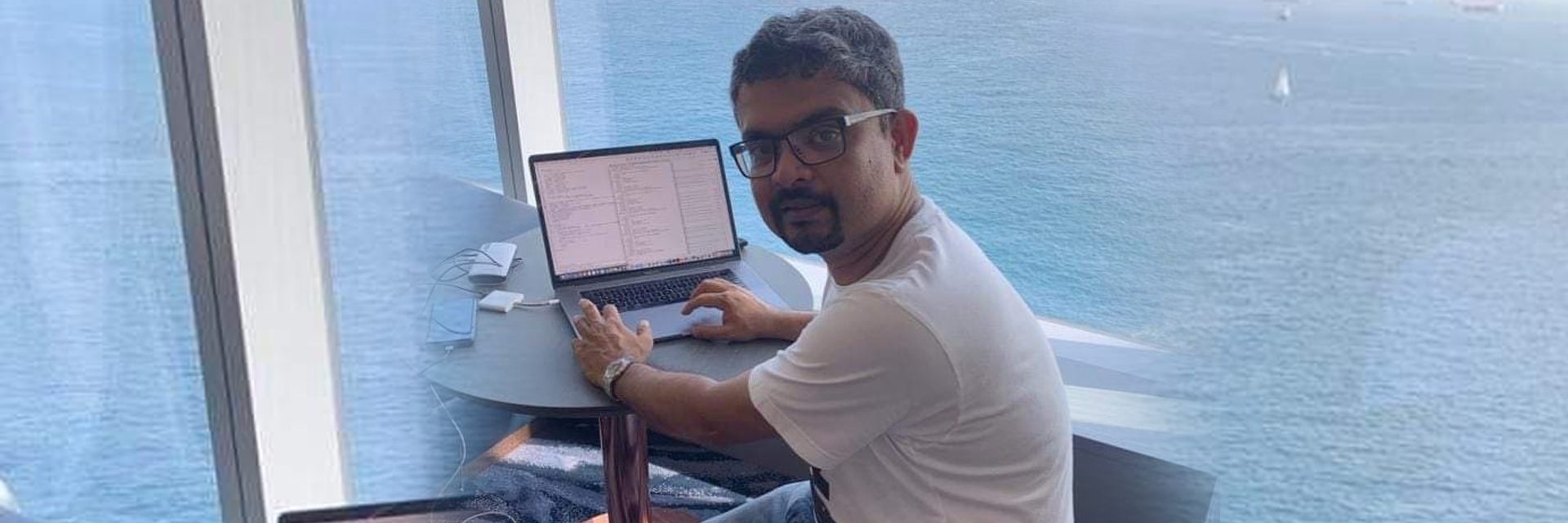(January 22, 2022) “There is no greater pleasure than seeing parents who thought they were going to lose their child take them home cured of heart disease,” says Dr Sanjiv Nichani OBE. Destiny’s child himself, a quirk of fate turned his carefree childhood into one of anguish. Three angels – his doting mama (maternal uncle), mami (aunt) and a wise grandmother gave a shy, reticent and introverted boy the nurturing to excel. To this day, the British-Indian consultant paediatrician calls his adult transformation a “personality transplant.” It held him in good stead as he created a legacy that breathes in the innumerable critically ill children he has saved. The ingenious and brilliant doctor is now thanking providence as he prepares to meet Queen Elizabeth to receive the – Officer of the Order of the British Empire (OBE) in February 2022 for his pioneering work and service to critically ill children (Covid permitting). The honour is a culmination of years of dedication to children’s health in Leicester and Healing Little Hearts, a charity he founded in 2007.
In India, the statistics are staggering – about 80,000 children are born needing heart surgery yearly. Only 20,000-30,000 get it.
Ever smiling, a stickler for facts, the salt and pepper-haired straight talker majored in paediatric dermatology, allergy and asthma. A recipient of the Points of Light Award by Prime Minister Theresa May and the Leicestershire Heroes Lifetime Achievement Award in 2019, his distinguished career exudes compassion. “It’s a feeling of elation and satisfaction money can’t buy,” Dr Sanjiv tells Global Indian.

Born in Bengaluru, he lived in a joint family till his parents moved to Toronto. Soon, life unravelled for the single child – his mother had a serious accident that left her paralysed on one side. It changed Sanjiv’s life irrevocably. “It’s a bit of a circuitous story that shaped me. In 1968, when I was a few years old, Mum met with a near fatal car accident whilst coming back from work. She was to pick me up from the nursery but I was unwell (at home),” says Dr Nichani, dodging death. His mother was in coma for months so it was decided to move back to Bombay in 1970, for the 24-hour care she needed, and for seven-year-old Sanjiv’s care.
The time with his grandparents and uncles saw him blossom. “Another quirk of fate was that my uncles were childless, so they adopted me. The family that accepted me were angelic,” smiles Sanjiv, recalling his father travelling often distributing Bollywood movies to the Americas – Mera Naam Joker to Peru, Rafu Chakkar and Nagin.
Happenstance was already set in motion. Schooled at Hill Range School, which he says was, “the worst school in Bombay yet with fantastic teachers,” Sanjiv studied at Jai Hind College, and did medicine at Pune’s Armed Forced Medical College in 1980. At Bombay Hospital, Sanjiv threw himself into paediatric training. During this time, the young Sanjiv got married to Kavita (an accountant), shifted to London (1989) where he trained in the care of sick children on a fellowship. It was kismet, when he met fellow doctor – the late Professor David Harvey, also called a champion of the less privileged. Dr Harvey was the paediatrician to the royal family. He took the idealistic and dedicated lad under his wings, moulded him.
View this post on Instagram
“He was happy with my work, and asked me to stay in the UK, and even sponsored me. Not only did he sponsor me, but he also gave me a job at the Great Ormond Street, the most famous children’s hospital in the world. He was an amazing man, a thorough gentleman,” reminisces Sanjiv who spent six years training. In 1992-93, his visa extension was refused by the home office. Years of study were suddenly at stake – “How am I going to survive?” was the worry. On the merit of his work at Great Ormond Street, he got a fellowship at the Los Angeles Children’s Hospital, though leaving the UK was poignant. The self-confessed anglophile who grew up on Dickens, Shakespeare and Monopoly, and had “a great affinity to the UK,” got an opportunity at Leicester around two years into his stint in the US – to open a new facility, and he jumped at it. Back to his beloved UK, Dr Nichani set up a CCU (1996), and a cardiac CCU for children which he merged later. Thus began his tryst with University Hospitals of Leicester, UK that flourishes even today.

How paediatrics became his carte e blanche to do good
Hardworking, driven and sincere, while assessing career options with his general physician mama (his heart set on internal medicine that involved three years study), his uncle suggested, do paediatrics, it’s shorter. “I had finished medical school at 22, and my thought was children – They’re noisy, messy, irritating, they cry. Reluctantly, because of shorter training, I chose paediatrics,” the British-Indian doctor admits.
Ironically, that “short” training led Dr Nichani on a 11-year exhaustive study into paediatrics! “After my initial apprehension and fear, I fell in love with it. It is so rewarding, treating critically-ill children. It’s like a whodunit as children can’t tell you symptoms, new-borns can’t tell you what’s wrong. You have to figure it out. It’s sort of a mystery – once I started, I have just loved it, and been so immersed in it so the years did not matter,” smiles the doctor.
Healing Little Hearts, one baby at a time
Life was chugging along, when he turned 40. A sense of responsibility and search for meaning awakened in his soul – To pay his quirks of fate forward. And to tell the world – “One in 100 children are born with heart problems. In India, the statistics are staggering – about 80,000 children are born needing heart surgery yearly. Only 20,000-30,000 get it. A million are dying from untreated heart disease every year world over,” informs the impassioned healer.
“I had begun to think about legacy – what I’m going to leave behind,” reveals Sanjiv. The restless do-gooder would visit India, spend family time, and then his attention would start to wander. “I’d say – I’ve done the chatting, the eating, now what?” he quips.
Very aware of the non-existent state of child healthcare, he found his metier, “Heart surgery for children is expensive, and children can’t pay bills,’ and have longer hospital stays. Shockingly, there was nothing to help them,” he lamented, and got into action. By offering free heart surgeries with the charity he founded – Healing Little Hearts in 2007.

The children’s emissary cold-called Hinduja Hospital, and asked – could he bring a team to operate on children needing heart surgery for free. They said yes. And Healing Little Hearts had its first charity mission. “I brought a team from Leicester, operated on 16 children in a gruelling 10-day visit. It was successful. Everybody was happy, and everything seemed poised right,” smiles an exuberant Sanjiv. He returned to the UK, inspired to plan his next visit. To his utter dismay, the local surgeon didn’t want them back! “We exposed his lack of expertise.” Vetoed to return, disappointed not defeated, and relentless, the “egos” he collided with vexed him, “It’s sad, very sad that ego trump’s humanity and need. Often, a lack of skill and talent is exposed. However, what has been incredibly positive is that people are immensely generous – our donors, doctors, nurses and partners. Our 200 volunteers are also so caring and kind,” the British-Indian doctor adds.
In 18 months, HLH was back on – with Asian Heart Institute. However, unbeknownst to Dr Nichani, the hospital had been charging patients. Disappointed, after much research, he found Holy Family Hospital Mumbai – today, the HLH team has had missions in Srinagar, Raipur, Bengaluru, Chennai, Pondicherry, Goa, Manipur, Andhra Pradesh – even trained a surgeon at Andhra Hospital in Vijayawada (2015).
Today, Sanjiv jests that HLH has become the “United Nations” for critically-ill children in 13 countries – Uganda, Bangladesh, Palestine, Jordan, Pakistan, Malaysia, Kenya, Nigeria, Tanzania, Cameroon, Mauritius, Romania, Latvia. “We’re going to the 14th soon – Namibia,” he says.
“It’s now the Healing Little Hearts Global Foundation,” he laughs, hugely thankful to the British public – for donations. His team of 10 travel for a week (eating into their annual holidays), operate on 15 to 16 children, have done 30 surgeries a week – a heart-warming record.

It’s one thing to operate at a state-of-the-art hospital, quite another to do it in a developing country. “It’s challenging. My son and I published an article on inadequate and suboptimal equipment. But due to this, our skills have been uplifted. We come back better doctors, better nurses,” says Dr Nichani who has had life changing experiences with HLH. “We’ve operated on 2,149 children. Have done 160 international heart missions. Worked with 42 different hospitals,” says the visionary who wants to reach landmark 5,000 surgeries before he retires. During Covid 19 too, the team covered six countries, operated on 140 children (Sept to Dec 2021).
The OBE – exhilarating
An email from the UK Cabinet Office informed him of his OBE – His first thought – ‘It’s spam. Somebody is pulling my leg.” When it sunk in, “It was a mixture of disbelief, exhilaration and ecstasy,” he says, adding, “It’s one of the most amazing honours in my life – Not just for the charity, but because of my contribution towards medicine and what I’ve done for child services and the hospital in Leicester. I haven’t got it yet in person (though),” adds the doctor who had to fight the government trying to shut down the hospital twice. “We fought very hard. I organised a debate in the Houses of Parliament. It went to appeal and we exposed flaws in the process. The independent review overturned that decision. We beat them,” recalls the surgeon.
The incredible legacy of Dr Sanjiv Nichani has persevered – giving Leicester a children’s hospital, and poor and ill children heart surgeries. Now, he awaits his call to Windsor Castle.

His son Sharan, a medical tech company exec and Sahil, a doctor, who hopes to follow his father into paediatrics, are his pride and joy. “My boys are my life, and so is my charity,” enthuses Dr Sanjiv, who loves Bollywood music and dancing – has even won a few dance contests. The fourth-degree black belt in karate is regular, even today.
The lean, observant doc now wants to build heart centres in Africa. “We pay for heart surgeries, but we want to incorporate other surgeries too,” he adds. Mukul Madhav Foundation run by Rita Chabria is a charity partner. “You need committed partners to be able to deliver a vision,” says the philanthropist who has donated equipment to Syria too.
The shy boy who came to the UK remembers those three angels often, “My mama, mami (aunt) and grandmother gave me affection, attention and a solid grounding. They taught me empathy and resilience.”
Advice from the OBE?
“Be grounded, realistic, have a clear vision, perseverance and humility. Pick yourself up from setbacks. Your success is because of the people who supported the idea. Countless amazing donors, volunteers and people have made my ideas achievable,” he adds, grateful.

Honest to a fault, Dr Nichani despises arrogance. His life’s lesson to his boys, “You can learn from people how to be. Also equally, you can learn from people how not to be.”
(Donations can be made by PayPal or the website https://healinglittlehearts.org/ or https://healinglittlehearts.org/make-a-donation/)



